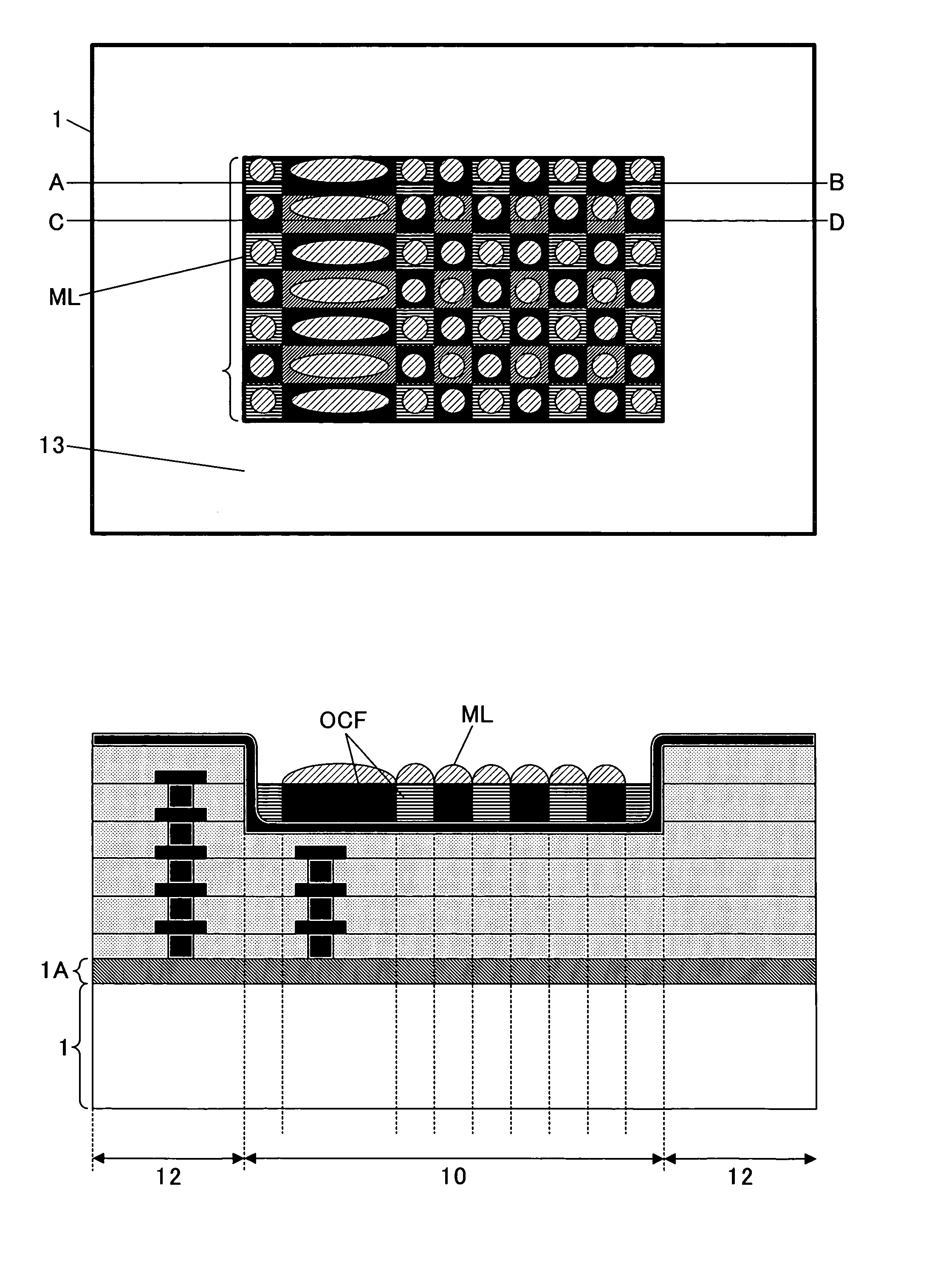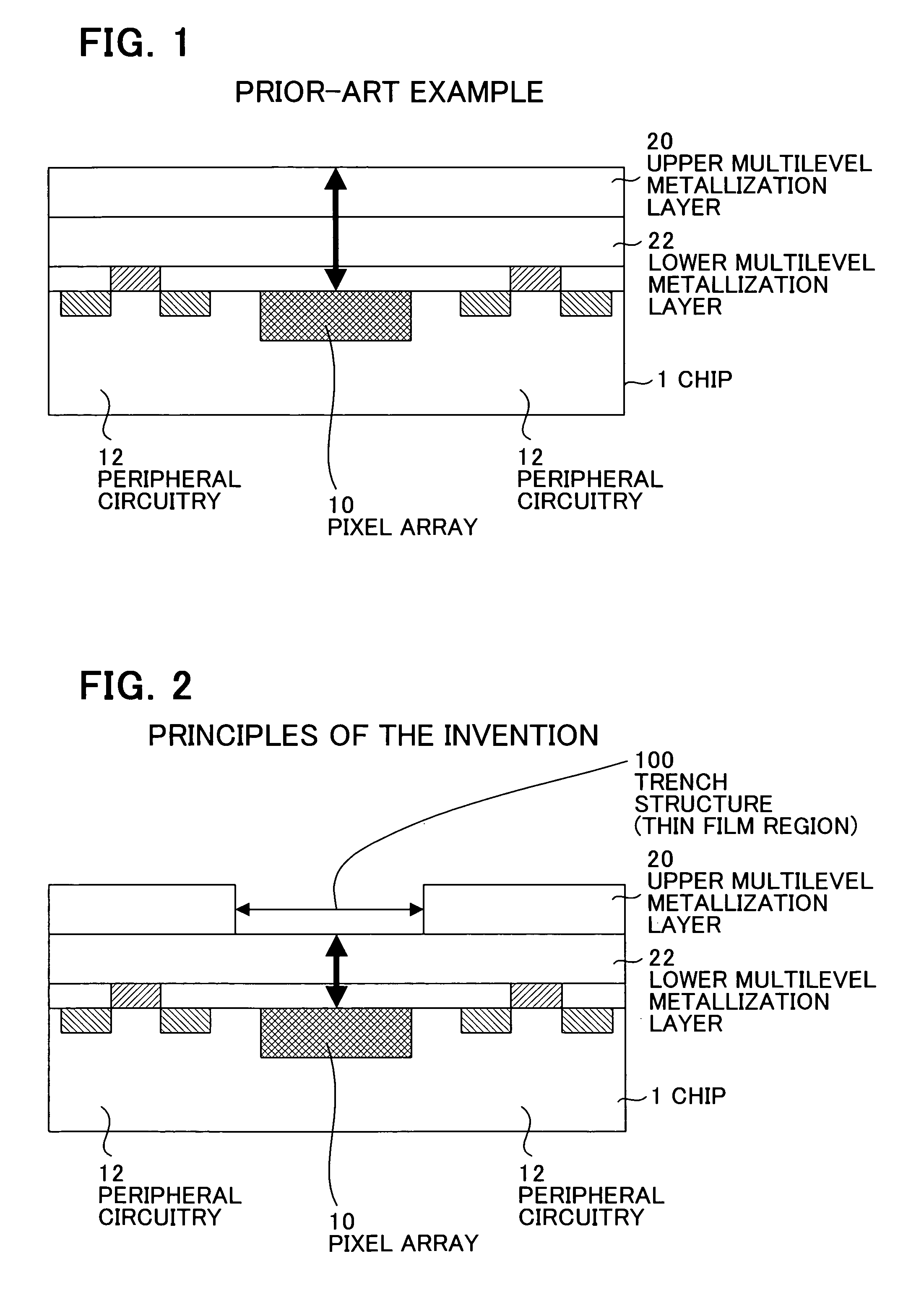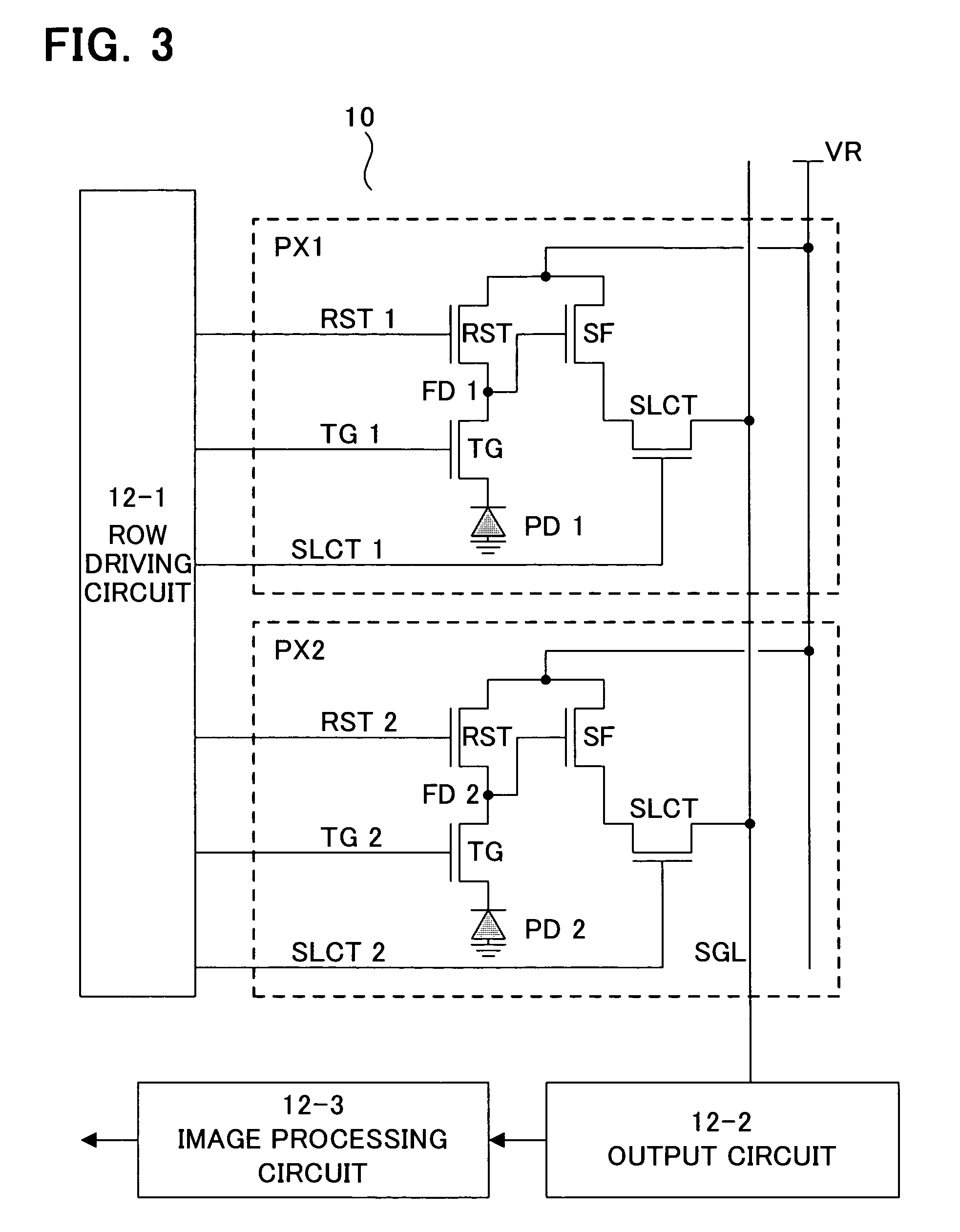Solid-state imaging device
a solid-state imaging and imaging device technology, applied in the direction of color television, television system, radio control device, etc., can solve the problems of difficult fabrication of structures, inability to avoid incident light passing through thicker multi-level metallization structures, etc., to achieve the suppression of incident light attenuation and scattering, and the effect of more highly integrated circuits
- Summary
- Abstract
- Description
- Claims
- Application Information
AI Technical Summary
Benefits of technology
Problems solved by technology
Method used
Image
Examples
first embodiment
[0039]FIG. 4 is a diagram of an image sensor according to the invention. FIG. 4A is a cross-sectional view of an image sensor chip 1 housed in a package 2, and FIG. 4B is a plan view of the chip 1. The chip 1, which is an image sensor, is contained within the package 2, and a condensing lens 4 is provided at the top of the package 2. The chip 1 has a pixel array portion 10 at the center, and peripheral circuitry portion 12. Here, for the sake of convenience, pixel array portion 10 and periphery circuitry portion 12 each include both circuit elements within the chip and a lower multilevel metallization structure (represented by the reference symbol 22 in FIG. 2). In addition, an upper multilevel metallization structure 20 is provided above the peripheral circuitry portion 12.
[0040]The pixel array portion 10 has a black pixel region 13 at the periphery and a light-receiving pixel region 11 at the center. The black pixel region 13 is composed of a barrier film or the like so as not to ...
second embodiment
[0042]FIG. 5 is a diagram of an image sensor according to the invention. As in FIG. 4, FIG. 5A is a cross-sectional view of an image sensor chip 1 housed in a package 2, and FIG. 5B is a plan view of the chip 1. The pixel array portion 10 and the peripheral circuitry portion 12 on the chip 1 are the same as in FIG. 4.
[0043]In this embodiment, the light-collecting convex lens 4 is large and exterior light is collected through this to the light-receiving pixel region 11. In addition, the size of the trench structure 100 has been made wider than the light-receiving pixel region 11 so as to keep the incident light from being blocked by the upper multilevel metallization layer 20. Here too, the upper multilevel metallization layer 20 is formed over both the peripheral circuitry portion 12 and part of the black pixel region 13, thus enabling the surface area of the power distribution plane formed on the multilevel metallization layer 20 to be increased.
third embodiment
[0044]FIG. 6 is a diagram of an image sensor according to the invention. As in FIG. 5, FIG. 6A is a cross-sectional view of an image sensor chip 1 housed in a package 2, and FIG. 6B is a plan view of the chip 1. FIG. 6A is similar to FIG. 5A.
[0045]In this embodiment, protrusions 100A are formed at the four corners of the trench structure 100 on the pixel array 10. In other respects, this embodiment is identical to the second embodiment described above. These protrusions 100A are provided so as to enable a layer of liquid material to form to a uniform film thickness at the bottom of the trench structure 100 when an optical color filter, microlens or photoreceptor resistor is produced by spin coating a layer of liquid material onto the trench structure 100.
[0046]FIG. 7 illustrates a spin coating method used to form a layer of liquid material on the trench structure in the third embodiment of the invention. In this spin coating method, the semiconductor wafer is mounted on a spinner an...
PUM
 Login to View More
Login to View More Abstract
Description
Claims
Application Information
 Login to View More
Login to View More - R&D
- Intellectual Property
- Life Sciences
- Materials
- Tech Scout
- Unparalleled Data Quality
- Higher Quality Content
- 60% Fewer Hallucinations
Browse by: Latest US Patents, China's latest patents, Technical Efficacy Thesaurus, Application Domain, Technology Topic, Popular Technical Reports.
© 2025 PatSnap. All rights reserved.Legal|Privacy policy|Modern Slavery Act Transparency Statement|Sitemap|About US| Contact US: help@patsnap.com



